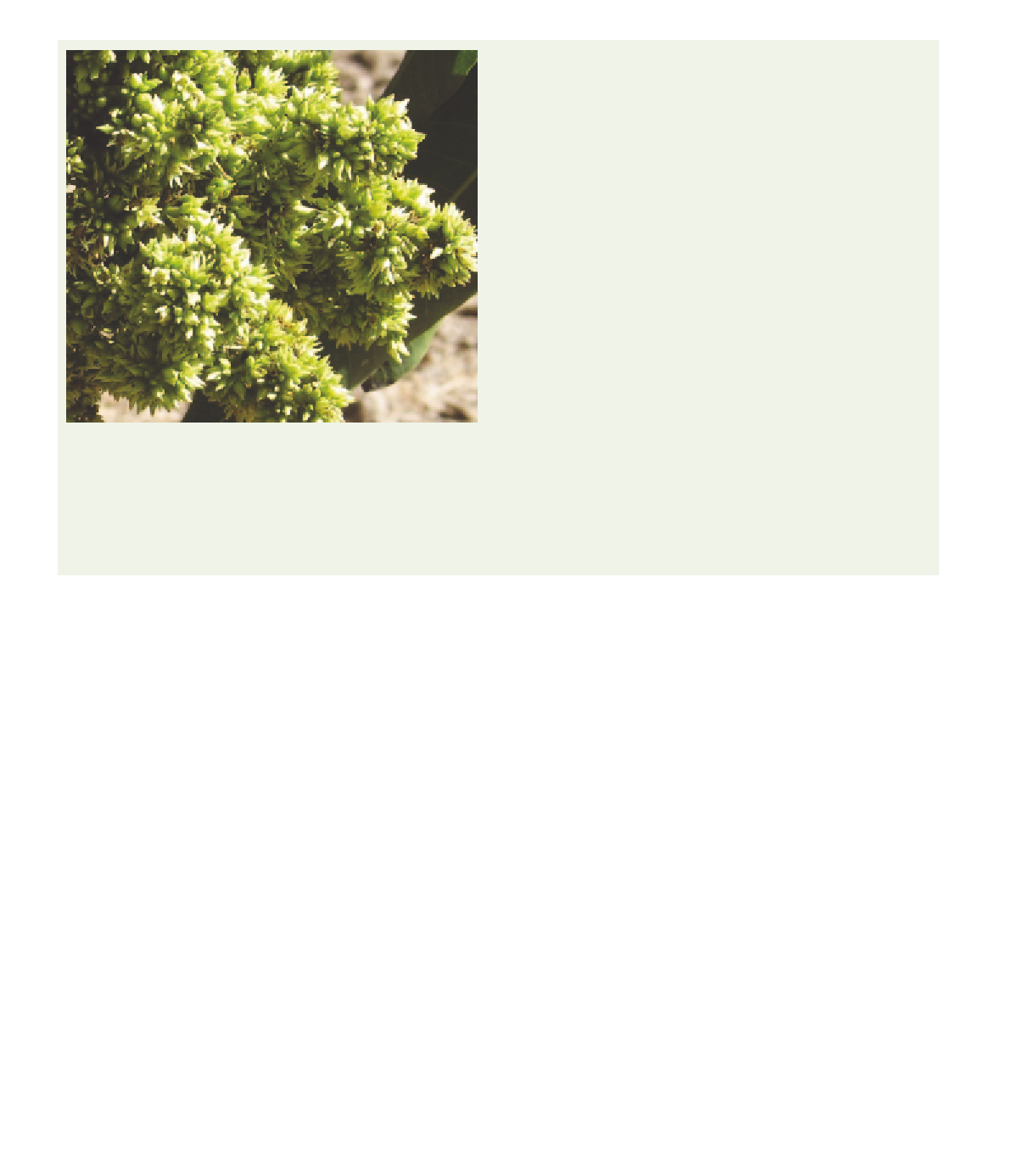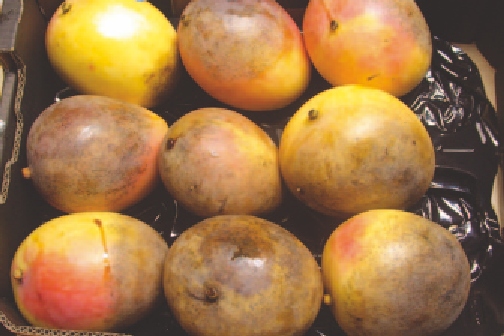Agriculture Reference
In-Depth Information
in moving the fungus from infected to uninfected
plants. The distribution of the fungus in the plant
suggests that apical buds are the primary infection
sites.
Importance
Malformation is widespread in most mango production
areas of the world, except for a few (e.g. Australia).
Therefore, it is a disease of quarantine significance and
importance to the Australian mango industry. A recent
isolated outbreak of mango malformation in the
Northern Territory is expected to be eradicated. The
disease causes serious losses, because malformed
inf lorescences do not bear fruit and extensive abortion
of fruits reduces production. Estimations of yield
reductions in some regions due to malformation are
as high as 50%.
Fig 12.27 Mango malformation at fruit set.
What to do if you suspect malformation
This pathogen is a biosecurity risk to Australia. Any
suspected affected plants should be reported to the
nearest Department of Primary Industries or the Plant
Health Australia hotline (1800 084 881).
The fungus is easily spread by grafting and infected
nursery trees are a common mode of dispersal.
Spread within the nursery is poorly understood, but it
is suspected that bud mites may play a significant role
PHYTOPHTHORA POSTHARVEST
FRUIT ROT
Importance
Phytophthora palmivora
is a known pathogen of mango that
causes various diseases, such as wilt, crown rot and root
rot. However, a postharvest fruit rot was not reported until
2007, when it was recorded for the first time on mango
fruit (cultivar B74) from the Northern Territory. It is
thought that fruit produced on low-lying branches became
Cause
The oomycete
Phytophthora palmivora
.
Symptoms
Initial symptoms are confined to the blossom end of
fruit. Infected areas are tan and firm, and fruit have a
characteristic sweet odour. Affected areas enlarge rapidly
to cover large areas of the fruit surface. When held under
humid conditions, a white bloom consisting of mycelium
and spores covers the fruit.
Source of infection and spread
Phytophthora palmivora
is a ubiquitous pathogen in
the tropics and has a wide host range. When favourable
conditions prevail, the pathogen produces abundant
fruiting bodies on the surface of infected fruit. The
fruiting bodies can be dislodged and spread through
the tree by wind-blown rain, infecting fruit high in
the canopy.
Fig 12.28 Mango fruit with symptoms of Phytophthora
postharvest
fruit rot.












